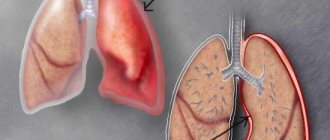Dysmenorrhea is a cyclic pathological process associated with the appearance of severe pain in women in the lower abdomen and lumbar region during menstruation. Painful sensations may also be accompanied by general weakness, headache, nausea, vomiting, loss of appetite, and other autonomic and emotional disorders.
There are primary and secondary dysmenorrhea, each of which has its own causes.
Treatment of dysmenorrhea is based on the use of drug and non-drug therapy methods, the purpose of which is to reduce pain.
Dysmenorrhea - what is it?
This condition refers to pain of varying intensity that a woman experiences before or during menstruation. Based on modern ideas about the disease, we are talking about metabolic-endocrine, neurovegetative and psycho-emotional deviations during menstruation. Distinguish
- the primary form, which is characterized by pain in the lower abdomen; the woman experiences pain either at the very beginning of menstruation, or shortly before its onset. In some cases, discomfort may last for several days. As a rule, the pain is of a nagging nature, often accompanied by general weakness, headache, nausea, and vomiting may occur.
- secondary dysmenorrhea is typical for older women. Painful cramps in the lower abdomen begin to bother you a few days, or even a couple of weeks before the start of your period. This form is a consequence of gynecological pathology: endometriosis, fibroids, malformations of the genital organs. Thus, painful menstruation is one of the symptoms of a disease of a gynecological, somatic or psychosomatic nature. It is possible that the cause of the secondary form is the intrauterine device - in this case, the pain decreases or disappears after its removal.
Characteristics of secondary dysmenorrhea
Secondary dysmenorrhea is associated with other diseases, most often with diseases of the pelvic organs. In most cases, this syndrome occurs in women after 30 years of age. The disease is quite common and is observed in 1/3 of all gynecological patients.
The pain is quite strong, women lose their ability to work during menstruation. Pain occurs about a day before bleeding begins. The pain is cramping, radiating to the lumbar region. Also, with secondary dysmenorrhea, the nature of menstrual bleeding changes: the amount of blood increases, blood clots appear. Menopausal dysmenorrhea also refers to the secondary form of the disease. Menstrual irregularities that occur at this time may be accompanied by dysmenorrhea. Menopausal dysmenorrhea develops against the background of hormonal changes in a woman’s body.
Causes
Some patients suffer from painful menstruation from adolescence: from puberty to menopause. But pain can appear in women who have not previously experienced any discomfort. The causes of dysmenorrhea in this case may be stress, hormonal disorders, inflammatory processes in the uterus and appendages, tumors, long-term dieting, etc. Particularly intense manifestations are observed with spastic parametropathy - irritation of the celiac plexus. There is a hypothesis that in girls, painful sensations are associated with insufficient development of the uterine muscles due to hypoplasia, atresia, and congenital narrowness of the cervical canal. Impaired blood outflow can also occur when the uterus is bent or the presence of an additional uterine horn. In addition, the hormonal theory is currently being discussed, according to which painful menstruation occurs due to excess estrogen and insufficient progesterone levels. It should be noted that a direct connection was found between the severity of dysmenorrhea and working conditions, as well as social status.
Causes of the disease
The occurrence of primary dysmenorrhea can be due to several reasons:
- Increased synthesis of prostaglandins. Prostaglandins are substances that enhance the contraction of smooth muscles. As a result, spasms occur and pain develops.
- Hormonal imbalance. This condition often occurs in young girls who have not yet completed the process of puberty.
- Psychological reasons: self-hypnosis. Many women fear pain, which leads to increased sensitivity.
The development of secondary dysmenorrhea can be associated with a number of diseases and pathologies:
- infectious lesions of the pelvic organs;
- venereal diseases;
- varicose veins and pelvic veins;
- benign and malignant tumors;
- dysplasia;
- inflammation of the lining of the uterus or cervix.
Wearing an intrauterine device can also lead to increased pain during menstruation.
Symptoms of the disease
Pain is the main symptom of this disease. Appearing in the lower abdomen, it can radiate to the groin or lower back, sometimes to the lower extremities. This type of pain is observed in the secondary form. Primary dysmenorrhea is characterized by paroxysmal pain, which almost always radiates to the lower back. Lasting for 1-2 days, it can be of varying intensity. In addition to painful sensations, nausea and vomiting, chills and frequent urination often occur.
Dysmenorrhea is often accompanied by extragenital diseases, among which the most common are biliary dyskinesia, scoliosis, mitral valve prolapse, flat feet, etc.
In addition, other symptoms of psychoemotional dysmenorrhea may occur: mood instability, depression and depression. Often the patient cannot tolerate sound stimuli, and the woman’s performance deteriorates. Statistics show that 85% of women experience dizziness, and half experience migraine-type pain. More than 60% of patients experience back pain, and some may experience diarrhea. In some cases, attacks of bulimia and anorexia occur, and libido decreases.
Characteristics of primary dysmenorrhea
Primary dysmenorrhea is not associated with any diseases or pathologies. Pain occurs during the first menstruation and can be repeated each time for a long time (up to several years). The pain in this condition is severe, and the girl’s ability to work is reduced. The pain may remain the same or intensify with each new menstruation.
Painful sensations in the abdominal area with primary dysmenorrhea appear 1–2 days before the start of the menstrual cycle and last until the bleeding stops. The pain is nagging, sometimes cramping in nature. In some cases, a woman experiences bursting pain that radiates to the rectum, bladder or appendages.
Complications
First of all, it is necessary to find out the cause of the pain. In the secondary form, there is a possibility of developing complications of the underlying disease or its transition to the chronic stage. In addition, some diseases, if left untreated, can lead to infertility. Also among the complications of dysmenorrhea is the possible appearance of psychosis as a result of poorly controlled pain during menstruation.
Complications and consequences of algodismenorrhea
- Endometriosis is one of the most common factors in the development of algomenorrhea. When the endometrium appears outside the inner layer of the uterine cavity (in the ovaries, cervix, genitals, etc.), inflammatory processes are possible.
- Uterus size is smaller than normal
- Difficulty in the outflow of menstrual blood from the uterus due to the pathological location of the uterus in the pelvic area
- Infectious diseases of the uterus and ovaries, inflammatory processes in the pelvis: adnexitis, salpingitis, endometritis, etc.
- Injuries to the internal genital organs, unsuccessful surgery
- Psychosomatic factors: hypochondria, fear of menstruation, hysterical states, etc.
- Benign and malignant formations
- Ovarian dysfunction
Only a doctor can make a diagnosis of algodismenorrhea with complete confidence after a series of studies. Here are the main stages of diagnosis, which are usually carried out by gynecologists:
- Questioning the patient, forming a general clinical picture (how long ago the pain began, the last cycle failure, the functioning of the gastrointestinal tract, etc.)
- Collecting a history of women's health: the onset of sexual activity, past illnesses, surgical interventions, the presence of sexually transmitted diseases and experience in treating them, etc.
- Collecting information about menstruation (age of onset of menarche (first menstruation), length and stability of regular periods, abundance, symptoms of premenstrual syndrome, etc.).
- Inspection.
- Ultrasound of the pelvic organs for the presence of fluid and general pathologies.
- Microscopy of a smear of vaginal discharge, cervical canal and urethra.
- Taking tests for STDs, pathogenic organisms and viruses.
- Analysis of hormones at different periods of the menstrual cycle.
- Examination of the uterine cavity and cervical canal using a hysteroscope.
- Therapeutic and diagnostic laparoscopy.
- If necessary, consult a psychologist or psychotherapist.
In advanced stages, algodismenorrhea can regularly accompany monthly epithelial rejection, causing serious physical and psychological discomfort and limiting a woman’s social and personal life. This condition may also affect your ability to have children. This is due to the fact that algodismenorrhea (especially secondary) is a consequence of pathologies and larger gynecological diseases, and therefore a long diagnosis and lack of timely treatment can seriously affect a woman’s condition.
- Maintaining intimate hygiene during menstruation: shower 2 times a day, suitable cosmetics for intimate care, comfortable underwear made from natural fabrics, changing hygiene products every 3 hours.
- Regular examination by a gynecologist once every six months.
- Active lifestyle: light exercise for algodismenorrhea reduces the painful symptom; walking, hiking, etc. are also useful.
- Healthy diet: minimal consumption of smoked, fatty and very salty foods.
- No self-medication.
A high quality of life for a woman is the path to her health, excellent well-being, good mood and self-confidence. The correct choice of intimate cosmetics and the supervision of a competent specialist will help to avoid unpleasant delicate diseases, as well as quickly solve existing problems of women's health.
- CLINICAL AND PSYCHOPHYSIOLOGICAL FEATURES OF AUTONOMIC DYSFUNCTION IN GIRLS WITH ALGODISMENORHEA. Rodionova E. Yu., Chutko L. S. // Journal of medical and biological research. – 2020. – pp. 31-36.
- PREVALENCE AND CHARACTERISTICS OF PAIN SYNDROME IN PATIENTS WITH GYNECOLOGICAL PATHOLOGY. Ponomarev V.V., Bezrukov A.G., Ponomareva A.I., Zvereva M.G., Agafonova O.O. // Health and education in the 21st century. – 2012. – No. 4. – P. 482.
- CHRONIC PELVIC PAIN SYNDROME IN GIRLS. Pisklakov A.V. Barinov S.V., Plaksina V.S., Pavlenko N.I. // Pediatric surgery. – 2014. – No. 4. – P. 8-12.
- Gynecology of adolescents. Gurkin Yu. A. // St. Petersburg. – 2000.
- Diseases of the autonomic nervous system. Vein A. M. // M.: Medicine. – 2005. P. 3–5.
- Women's reproductive health and justification for the system of measures to improve it (using the example of St. Petersburg). Komlichenko E.V. // Abstract of thesis. doc. honey. Sci. St. Petersburg – 2010
Diagnosis of the disease
When diagnosing dysmenorrhea, the age of the patient, as well as the presence of other signs, plays a huge role. During examination in the primary form of the disease, nothing is determined by palpation. With secondary dysmenorrhea, you can detect an enlarged uterus, the presence of formations, etc. - the symptoms depend on the disease that is causing the pain.
- Laboratory diagnostic methods are also effective in the presence of an underlying disease and correspond to the nature of the changes that are possible with a certain pathology. To exclude an infectious factor, a bacteriological study is indicated.
- An ultrasound is performed to exclude any possible pathology (cysts, fibroids, tumors).
- MRI is prescribed if a previously performed ultrasound is uninformative.
- Encephalography is recommended in cases where dysmenorrhea is accompanied by headaches. With the help of this study, it is possible to identify possible pathologies of the central unequal system.
- Hysteroscopy - rarely used for painful periods. It is necessary for the diagnosis of intrauterine synechiae (Asherman's disease), adenomyosis.
- Diagnostic laparoscopy is prescribed in doubtful cases when the cause of pain cannot be detected and treatment is unsuccessful.
Diagnosis of pathology
When making a diagnosis, it is necessary to accurately establish the cause of the disease. To do this, you need to conduct a detailed general and gynecological examination (using mirrors), and pass a number of tests:
- Blood test to determine hormonal status (taken several times during one cycle).
- Test for STIs (venereal diseases).
- Vaginal smear.
It is also necessary to conduct a comprehensive ultrasound examination of the pelvic organs, including the uterus, ovaries, and bladder. A number of special examinations are carried out in the hospital:
- Laparoscopy (one of the methods of minor surgical intervention that allows you to examine all organs from the inside through several small punctures of the abdominal wall).
- Hysteroscopy (examination of the inner walls of the uterus, performed with a special device).
To determine the source of the headache and determine pathologies in the functioning of the central nervous system, an encephalography study is prescribed. If the presence of neoplasms, benign or malignant, is suspected, a study is carried out using a magnetic resonance imaging scanner.
How to treat dysmenorrhea
In some cases, to prescribe treatment, you may need to consult other specialists: a neurologist, surgeon, urologist, endocrinologist. The goal of treating dysmenorrhea is to relieve pain.
Treatment tactics depend on the cause of pain. In the secondary form, therapy is aimed at treating the underlying disease. In some cases, relief comes with the prescription of drugs that normalize hormonal levels. In the primary form, it is recommended to take non-steroidal anti-inflammatory drugs. Antispasmodics, gestagens, oral contraceptives - taking any medication should be previously agreed with your doctor. It is possible to take sedatives; in some cases, consulting a psychologist is advisable. The operation is performed for the secondary form, if conservative treatment has proven ineffective.
Causes
Factors influencing the development of dysmenorrhea in women are the following:
- The presence of disturbances in the development of internal genital organs.
- Hormonal imbalance.
- Inflammatory processes of a gynecological nature.
- Use of an intrauterine device.
- Venereal diseases.
- Injury to the genital organs.
- Kink of the uterus.
If we talk about primary dysmenorrhea, the causes of its occurrence are quite difficult to determine. They can be both physical and psychological in nature. In the first case, pain can be caused by excess production of prostaglandin hormones, which provoke spasm of smooth muscles.
In the second case, a woman can configure herself in advance in such a way that even a slight soreness seems to her to be unbearable pain.
Prevention
In order to prevent dysmenorrhea, it is recommended to adhere to a work-rest regime. Therapeutic and health-improving physical education for increasing general tone has a good effect. Running, aerobics, swimming - these sports are suitable for women of any age. The diet should be dominated by easily digestible and vitamin-rich foods. On critical days, milk-based dishes with a high content of salt and spices should be excluded from the menu, and coffee intake should be limited. You can use a warm heating pad on the abdominal area only after consultation with a gynecologist. In some cases, herbal remedies have a beneficial effect, but you should also consult a specialist about the advisability of their use.
Treatment of dysmenorrhea
The therapeutic course is aimed at reducing the intensity of pain and correcting hormonal levels. Treatment of the disease that causes menstrual irregularities is mandatory.
The main groups of pharmaceuticals that a doctor can prescribe:
- painkillers and antispasmodics;
- non-steroidal anti-inflammatory drugs;
- vitamin and mineral complexes containing vitamins E, C, B, folic acid, magnesium and zinc;
- combined oral contraceptives.
Also, for problems with hormonal levels, phytohormones are prescribed. These are plant extracts that are similar in action to female sex hormones. If internal organ disease is reported, a course of antibiotics, antiviral or antifungal drugs may be required.
The woman is seen by a gynecologist-endocrinologist, with consultations from a surgeon, physiotherapist and psychologist. General recommendations for dysmenorrhea: normalization of the daily routine, moderate exercise, good rest, diet. Women with dysmenorrhea should avoid eating chocolate, coffee and dairy products.
First of all, women are advised to use non-drug methods. For dysmenorrhea, physical therapy, physiotherapy, massage, acupuncture and taking herbal teas will be effective. Only if there is no effect, the patient is prescribed medications.
The main goal of treating dysmenorrhea is to eliminate gynecological pathology. They use medications, physiotherapy, and psychological influence. It is necessary to remove the fear of menstrual pain. For this, doctors prescribe antidepressants and even tranquilizers. Among the effective physiotherapy procedures are balneotherapy, sinusoidal currents, acupuncture, and galvanization of the collar zone.
Three types of conservative treatment:
- Use of gestagens. Hormones that renew the uterine mucosa, promote muscle relaxation, and keep estrogen levels under control.
- Use of hormonal contraceptives. Often these are combined oral contraceptives that prevent ovulation and reduce the production of prostaglandins. Contraceptives reduce pressure in the uterus, which leads to slower contractions and less pain. For dysmenorrhea, low-dose contraceptives (Lindinet, Logest) will be effective. COCs should be taken from the fifth day of the cycle, one tablet (21 days with weekly breaks) or 28 days in a row.
- Use of non-steroidal anti-inflammatory drugs. Prescribed for contraindications to gestagens and hormones. Anti-inflammatory drugs inhibit the production of prostaglandins. The recommended drugs are nurofen, ketoprofen and indomethacin. You need to take non-steroidal anti-inflammatory drugs one tablet three times a day.
Hormonal medications are prescribed for six months. They significantly reduce the volume of menstrual flow, which reduces the number of uterine contractions. Sometimes the patient is prescribed antispasmodics (papaverine), which inhibit spasms of the muscles of organs and blood vessels. For magnesium deficiency, Magne-B6 is recommended. Additionally, you can take antioxidants in a six-month course (vitamin E).
In case of psycho-emotional disorders, it is necessary to take sedatives (valerian, trioxazine). The course of treatment ranges from 3 to 6 months.
Surgical treatment of dysmenorrhea is effective for endometriosis, acute inflammation, and abnormalities in the structure of the genital organs. Hospitalization is carried out for abnormalities with critical symptoms.
Depending on what form of the disease is detected in a woman, the methods of adjustment may be different. It is worth noting that treatment can be conservative, folk, surgical or manual. Let's consider what treatment patients who are diagnosed with dysmenorrhea receive. The drugs are also worth mentioning.
To relieve negative symptoms, sedatives and painkillers are prescribed, physical therapy and light exercise, such as gentle yoga, are recommended.
In addition, psychologists work with the patient, which is especially important in case of primary algodismenorrhea: it is important to establish a healthy lifestyle and emotional state.
The main measures in the treatment of algodismenorrhea:
- Removing general and local inflammation, prescribing a course of medications.
- Prescription and correction (if necessary) of a course of therapeutic oral contraceptives.
- Taking progesterone medications.
- Prescribing a course of vitamins E and B6 to strengthen a weakened body.
- Surgical intervention (if necessary) to correct congenital and acquired anomalies of the internal genital organs.
- Physiotherapeutic procedures.
- Diet: exclusion of excessively salty and fatty foods, smoked foods, alcohol.
As with the treatment of any other disease, the accuracy of the diagnosis for dysmenorrhea plays a key role. If this is a secondary form, then it is necessary to focus on finding the causes that led to the cyclical occurrence of pathological conditions. If patients complain of severe menstrual pain and other symptoms associated with dysmenorrhea, it is necessary to prescribe a comprehensive examination. It includes:
- clinical blood and urine analysis;
- biochemical blood test;
- gynecological examination;
- Ultrasound of the pelvic organs, abdominal cavity;
- tests for tuberculosis (to identify or exclude tuberculosis of the pelvic organs).
If necessary, the doctor can prescribe consultations with related specialists, as well as additional examinations according to indications:
- hysteroscopic;
- electroencephalographic;
- laparoscopic.
The data obtained during the examination is analyzed by the attending physician. He develops a treatment strategy, during which it is possible to prescribe clarifying examinations and tests. Thus, a doctor can prescribe, for example, diclofenac for diagnostic and treatment purposes for several days, which makes it possible to distinguish primary dysmenorrhea from secondary dysmenorrhea by the nature of changes in the pain syndrome, in particular those occurring against the background of endometriosis.
If, when taking the drug, menstrual pain quickly subsides in the first days, then the likelihood of primary dysmenorrhea increases. If the pain remains, gradually weakening by the fifth day, then this picture is typical for endometriosis. When testing with non-steroidal anti-inflammatory drugs, which include diclofenac, the patient may not experience any dynamics of change in the nature of pain. This indicates the presence of psychosomatic problems, as well as genital defects.
Nonsteroidal anti-inflammatory drugs also find practical use in the symptomatic treatment of primary dysmenorrhea. Their action is directed against the synthesis of prostaglandins, the excessive production of which leads to pain. The effectiveness of these drugs in the treatment of primary dysmenorrhea reaches 80%.
In the treatment of secondary dysmenorrhea, diclofenac and similar drugs are also used in the fight against pelvic inflammation. The side effects of these drugs must be neutralized with additional drugs, for example, nimesulide, etc. The doctor prescribes preventive and therapeutic drug regimens individually, taking into account the medical history of the particular patient.
Antispasmodics are widely used to relieve spastic pain. In this case, they are preferable to analgesics (including non-narcotic ones), since they do not erase the symptoms of organ diseases, while relieving or preventing spasms of smooth muscles.
One of the pharmacological methods for treating dysmenorrhea is hormone therapy. In particular, two types of drugs are used: combined oral contraception and progesterone drugs. Birth control pills are not prescribed to women trying to become pregnant. In this case, hormone therapy is carried out with progesterone preparations, or rather, containing its derivatives.
Hormonal therapy allows you to control the production of prostaglandins, reduce the contraction of myometrial muscle cells, thus eliminating the main cause of pain.
Psychosomatics plays a certain role in the treatment of menstrual pain. A number of studies show the positive effects of placebo. It is possible that psychotherapy and psychotropic drugs may be effective for the treatment of dysmenorrhea. But for now this direction is at the research stage.
Specialist consultations
Endocrinology
| Name of service | Cost, rub. |
| Consultation with an endocrinologist | 2 300 |
Gynecology
| Name of service | Cost, rub. |
| Initial consultation with a gynecologist | 2 300 |
| Repeated consultation with a gynecologist | 1 900 |
| Initial appointment in uro-gynecology | 2 400 |
| Repeated appointment in uro-gynecology | 1 900 |
Algomenorrhea
Algodysmenorrhea
is painful menstruation, accompanied by a violation of the general condition. They occur with abnormalities in the development of the uterus, hormonal disorders, increased excitability of the central nervous system, organic lesions of the uterus due to certain inflammatory and non-inflammatory diseases, abortions and complicated childbirth.
Algodismenorrhea is characterized by aching or cramping pain in the lower abdomen in the first days of menstruation. Possible weakness, nausea, swelling, headaches, dizziness, sweating, bowel movements and decreased performance. The diagnosis is established on the basis of anamnesis, complaints and objective research data.
Treatment tactics depend on the cause of the disease.
Algodismenorrhea is cramping or aching pain in the first days of menstruation, occurring against a background of general malaise. It is a widespread disease, detected in 30-50% of women of reproductive age. In every tenth case it is accompanied by severe disability. May be primary (essential) or secondary (symptomatic).
Primary algodismenorrhea manifests itself in adolescence. As a rule, it is not associated with diseases of the female genital organs. Secondary algodismenorrhea usually develops after 30 years of age against the background of inflammatory or non-inflammatory gynecological diseases, after complicated childbirth, crude abortions, etc. Treatment is carried out by specialists in the field of gynecology.
Algomenorrhea
The reasons for the development of primary algodismenorrhea can be mechanical, endocrine, neuropsychogenic and constitutional.
Mechanical causes include abnormal development of the uterus, abnormal position of the uterus (hyperanteflexia), cervical atresia and other pathological conditions that create an obstacle to the normal outflow of menstrual blood.
The endocrine cause of algodismenorrhea is the excessively active synthesis and slow decay of prostaglandins.
Prostaglandins increase the contractility of the muscular layer of the uterus, cause spasm of the arterioles, which leads to a deterioration in the blood supply to the myometrium, and act on the nerve fibers in the uterine wall, increasing their sensitivity to pain.
Prolonged vascular spasm, increased contractions of the uterus and increased pain sensitivity provoke pain.
Other symptoms of algodismenorrhea are also associated with an increase in the level of prostaglandins: nausea, diarrhea, increased heart rate, chills, hyperhidrosis, dizziness, etc.
Among the neuropsychogenic reasons for the development of algodismenorrhea, experts name an individual decrease in the threshold of pain sensitivity, hidden rejection of one’s feminine essence, denial of the sexual aspects of life and oneself as a woman and mother.
The constitutional cause of algodismenorrhea is infantilism. Hypoplasia of the uterus and insufficient development of the myometrium reduce the organ’s ability to stretch during menstruation.
The pressure on the walls of the uterus increases, this causes irritation of sensitive nerve fibers and the appearance of pain.
Secondary (symptomatic) algodismenorrhea occurs as a result of inflammatory and non-inflammatory diseases of the female genital organs, surgical interventions, adhesions in the pelvis, complicated childbirth and damage to the cervix during curettage. The most common causes of secondary algodismenorrhea are adenomyosis and external endometriosis. Pain during menstruation in these diseases is caused by desquamation of heterotopic areas of the endometrium.
The separation of cells is accompanied by irritation of a large number of nerve fibers in the wall of the uterus, peritoneum, and other organs and tissues containing heterotopic endometrial cells, and causes a sharp increase in the level of prostaglandins.
The release of prostaglandins provokes intense pain and general malaise. In many patients, secondary algodismenorrhea develops against the background of submucosal uterine fibroids.
Myoma prevents the outflow of menstrual blood, the uterus begins to contract more intensely, the pressure in its wall increases, the nerve fibers are irritated, prostaglandins are released, and pain appears.
Algodismenorrhea also often appears in inflammatory diseases, especially chronic, long-term ones.
This is due to the fact that inflammation provokes the formation of adhesions, and the adhesive process entails a disruption of the location of the uterus and the appearance of mechanical obstacles to the normal outflow of menstrual blood.
In addition, inflammation is accompanied by tissue swelling and compression of nerve fibers and in itself causes pain, aggravated by contractions of the uterus.
In some cases, algodismenorrhea develops after the installation of an intrauterine device, which stimulates the production of prostaglandins. In some patients, symptoms of algodismenorrhea appear after rough curettage during an abortion or after a complicated birth.
The cause of algodismenorrhea in such cases is a rupture of the posterior leaf of the broad ligament of the uterus or varicose veins of the small pelvis.
Sometimes, with secondary algodismenorrhea, separation of the “uterine cast” is observed - a condition in which the functional layer of the endometrium does not undergo melting in the uterine cavity, but comes out of it in the form of a solid film. The release of such a film is accompanied by very intense cramping pain.
Primary algodysmenorrhea is usually detected in sensitive, emotionally unstable girls of asthenic physique with a tendency to underweight. Secondary algodismenorrhea is more often diagnosed in women over 30 years of age.
The patient's history reveals abortion, installation of an intrauterine device, childbirth, surgery on the pelvic organs, infertility, inflammatory (endometritis, cervicitis, adnexitis, salpingitis, oophoritis) and non-inflammatory (adenomyosis, interstitial fibroma of the uterus, endometriosis, polycystic ovaries) diseases of the female genital genitals organs.
Patients complain of pain and deterioration in general condition. Pain syndrome with algodismenorrhea occurs simultaneously with the onset of menstruation or several hours before its onset. The pain is often cramping, less often - pulling, aching or bursting.
Possible irradiation to the lumbar region, groin area, perineum, rectum or upper part of the inner thighs. The intensity of pain during algodismenorrhea may vary.
There can be both moderate pain that does not have a significant impact on the ability to work and can be easily eliminated with conventional analgesics or antispasmodics, as well as extremely intense pain that requires professional medical care.
Violation of the general condition during algodismenorrhea is manifested by vegetative-vascular, metabolic and emotional-psychological disorders.
Shortly before the onset of menstruation and in the first days of menstruation, a woman suffering from algomenorrhea becomes touchy and irritable, and worries excessively about minor reasons.
There may be a persistent decrease in mood, drowsiness, increased or decreased appetite, taste distortion and odor intolerance.
Autonomic and vascular disorders in algodismenorrhea manifest themselves in the form of hiccups, belching, nausea, vomiting, dry mouth, diarrhea, bloating, fever, chills, fever to subfebrile levels, increased urination, dizziness, headache, fainting and presyncope, pain and discomfort in the heart area, increased or decreased heart rate, extrasystole, numbness and coldness of the extremities. Metabolic disorders in algodismenorrhea are indicated by skin itching, an increase in the amount of urine excreted, general weakness, a feeling of weakness in the legs and intermittent pain in the joints.
In diseases of the female genital organs, the clinical picture of algodismenorrhea may become somewhat more complicated or modified due to the overlap of symptoms of the underlying disease.
Depending on the characteristics of the course, two forms of algodismenorrhea are distinguished - compensated and decompensated. In patients with a compensated form of the disease, symptoms remain stable for many years.
In patients with a decompensated form, increased pain and worsening disorders of the general condition are detected over time.
The diagnosis is made on the basis of complaints, anamnesis and additional research data.
The gynecologist finds out when a patient with algodysmenorrhea first experienced pain during menstruation, what is the duration of the pain, whether the pain is accompanied by a violation of the general condition, whether the patient with algodysmenorrhea suffers from gynecological diseases, whether there has been a history of childbirth, abortion and surgery on the female genital organs. During the interview, the doctor determines at what age menstruation began, how long the cycle is, how often cycle disorders occur and how heavy the menstruation is.
After collecting complaints and clarifying the medical history, the specialist conducts a gynecological examination, takes a smear from the cervical canal, vagina and urethra. Then a woman with algodysmenorrhea is sent for an examination, which includes an ultrasound of the pelvic organs, general blood and urine tests, testing for sexually transmitted diseases and a study of hormone levels.
To clarify ultrasound data, CT and MRI of the pelvis are used. For algodismenorrhea, presumably caused by polyposis and endometriosis, hysteroscopy and separate diagnostic curettage are prescribed. In some cases, laparoscopy is performed. If necessary, a patient with algodismenorrhea is referred to a urologist, psychologist, psychotherapist and other specialists.
Treatment of algodismenorrhea is carried out on an outpatient basis. The classic method of treatment is pharmacotherapy in combination with physiotherapy. In the presence of gynecological diseases, tactics are determined depending on the underlying pathology.
Patients with algodismenorrhea are prescribed non-steroidal anti-inflammatory drugs that suppress the synthesis of prostaglandin synthetase. It is recommended to start taking medications for algodismenorrhea 2-4 days before the start of menstruation and stop 2-4 days after it starts.
Use aspirin, paracetamol, ibuprofen, naproxen, diclofenac and their analogues.
For algodismenorrhea, combination agents are also widely used, which include an analgesic and an antispasmodic.
If algodismenorrhea is accompanied by very intense pain, the drugs are administered intravenously or intramuscularly over 3 or 4 cycles, sometimes in combination with sedatives and antihistamines.
If there is no effect from analgesics and antispasmodics, patients with algodismenorrhea are prescribed oral contraceptives containing ethinyl estradiol and levonorgestrel.
In the second phase of the cycle or shortly before the onset of menstruation, patients with algodismenorrhea are referred for phonophoresis and electrophoresis with sodium bromide, magnesium sulfate, trimecaine or novocaine. Patients with algodismenorrhea are prescribed short-wave diathermy, diadynamic currents and ultrasound.
Some specialists use reflexology. In the presence of psycho-emotional disorders, treatment by a psychologist or psychotherapist is indicated.
Patients with algodismenorrhea are provided with psychological support, prescribed sedatives, taught relaxation techniques, and have explanatory conversations about the nature of algodismenorrhea and its safety for life.
Women suffering from algodismenorrhea are advised to give up bad habits, avoid drinking strong caffeine-containing drinks, normalize their daily routine, eliminate stress factors if possible, lose weight (in case of excess body weight), maintain a balanced diet, and maintain moderate physical activity. Primary algodismenorrhea, as a rule, responds well to treatment. The prognosis for secondary algodismenorrhea depends on the type and characteristics of the course of the underlying disease.
Source: https://www.KrasotaiMedicina.ru/diseases/zabolevanija_gynaecology/algodismenorrhea
Secondary form: reasons
Women who have given birth or those women who are over 30 years old have a pathology called secondary dysmenorrhea. However, medicine knows of cases where the disease was detected in young girls.
The cause of the pathology in this case is diseases acquired during life. These include endometriosis, adenomyosis, endometritis, inflammation and sexually transmitted diseases.
If the secondary form is accompanied by endometriosis, then the cause of the disease is improper production of estrogen. At the same time, the endometrium grows in the peritoneum, and its normal functioning begins. In this case, the release of blood into the abdominal space causes unbearable pain, increased body temperature and deterioration of well-being.
In inflammatory or infectious diseases, dysmenorrhea has physiological causes. In this case, the body begins to secrete a protective fluid, which quite quickly leads to the formation of adhesions.
Dysmenorrhea in women - what is it?
Last update: 11/30/2019
Author of the article
Gartleb Oksana
Obstetrician-gynecologist of the highest category, Head of the gynecological department of the Medgard-Saratov network of multidisciplinary clinics
articles
What to do if you have dysmenorrhea?
The appearance of pain in the lower abdomen during menstruation is called dysmenorrhea.
As a rule, pain is accompanied by general weakness, nausea, vomiting, loose stools, dizziness, sometimes fainting, and fever up to 37-38C.
This pathological condition is cyclical and can significantly reduce a woman’s quality of life, negatively affecting her well-being, study/work/sports and other areas of life.
What is dysmenorrhea in women?
Normally, menstruation should not cause pain.
However, if certain prerequisites are present, dysmenorrhea may develop - this is a pathological condition represented by the occurrence of acute, cramping or spastic, sharp, in some cases bursting or pulling pain in the lower abdomen. The pain associated with dysmenorrhea can be so severe that a woman becomes unable to work for several hours, and without treatment for up to 3 days, and is forced to remain in bed.
Dysmenorrhea is a common gynecological problem that affects about 50-90% of women of reproductive age.
Such a large statistical spread is due to different approaches to recording cases of dysmenorrhea diagnosis. For example, some doctors do not record the presence of this condition in their patients (unspecified dysmenorrhea) in cases where (in their opinion) there is no direct need for medical intervention.
Moreover, approximately 45% of women and girls who complain of pain of varying intensity and a general decrease in performance during menstruation suffer from a severe form of this pathology, approximately 35% from moderate dysmenorrhea and only 20% from its mild form. Most often, dysmenorrhea affects patients suffering from vegetative-vascular disorders, neurasthenia, chronic fatigue, a tendency to depressive and anxiety disorders, and psychosomatics.
There are several types of dysmenorrhea.
Compensated and decompensated dysmenorrhea
There are two forms of dysmenorrhea - compensated and decompensated. The compensated form is characterized by pain, the intensity of which remains unchanged for several years, while decompensated dysmenorrhea is characterized by an increase in pain from year to year.
Primary dysmenorrhea
When menstrual pain appears in adolescence, the patient is said to have primary dysmenorrhea. It is usually caused by insufficient development of the pelvic organs or hormonal imbalances.
If girls who have entered puberty have dysmenorrhea, we are usually not talking about the presence of serious pathologies and diseases in patients. The time of appearance of primary dysmenorrhea varies from person to person.
It usually ranges from 1 to 3 years from menarche (first menstrual bleeding).
Expert opinion
Primary dysmenorrhea is a serious social problem. Since this pathology primarily develops in schoolgirls and students, they are often forced to miss classes at school/university due to severe pain. This not only leads to a decrease in the patients' academic performance, but can also negatively affect their social activity and contacts with peers.
Obstetrician-gynecologist of the highest category Oksana Anatolyevna Gartleb
Secondary dysmenorrhea
If primary dysmenorrhea is usually not caused by the presence of serious diseases in a woman, then secondary dysmenorrhea is the result of their presence. These may be inflammatory processes in the pelvic area, endometriosis, benign neoplasms, etc.
And if the symptoms of primary dysmenorrhea are usually present in adolescence, then the first signs of the secondary form of this pathology most often appear closer to 30 years.
Sometimes pain during menstruation appears closer to the period of perimenopause (menopause), but cases where dysmenorrhea occurs at 40 years of age and later are still rare.
Causes of dysmenorrhea
Among the prerequisites for the development of primary dysmenorrhea are:
- Posterior bending of the uterus. Normally, the uterus is slightly tilted forward, but sometimes its position may deviate towards the lower back - in this case we are talking about retroflexion of the organ. When the uterus bends backward, the outflow of menstrual blood becomes difficult, resulting in dysmenorrhea.
- Hormonal imbalances. Dysmenorrhea in girls can be caused by a violation of the synthesis of prostaglandins (Pg), which in turn causes contraction of the uterine muscles and is perceived as pain.
- Heredity. The tendency to dysmenorrhea is often passed on from mother to daughter.
Secondary dysmenorrhea can develop for the following reasons:
- Inflammatory diseases of the pelvic organs.
- STD.
- Endometriosis.
- Intrauterine device.
- Dysplasia of connective tissue (statistically, about 60% of women suffering from painful menstruation have abnormalities in the development of connective tissue).
- Dilation of the pelvic veins.
- The presence of adhesions in the pelvis.
Symptoms of dysmenorrhea
The main symptom of dysmenorrhea is pain in the lower abdomen that appears the day before the start of menstruation or on any day of menstruation.
Its character can be different: most often with dysmenorrhea there is a sharp, cramping pain, but in some cases it can be bursting, cutting, pulling. The localization of pain can affect not only the lower abdomen: with dysmenorrhea, the lower back, ovarian and rectal areas can also hurt.
In addition to pain, there may be complaints about the following symptoms of dysmenorrhea:
- Increased body temperature.
- Weakness.
- Disorders of the gastrointestinal tract.
- Headache.
- Heart rhythm disturbances.
- Insomnia.
- Irritability, tearfulness.
Primary and secondary dysmenorrhea: diagnosis and treatment
If a woman's period is usually associated with the appearance of the conditions described above, she is advised to consult a doctor. The current level of development of gynecology makes it possible to reduce the symptoms of dysmenorrhea, therefore, the sooner the patient begins treatment, the better.
The following methods are used to diagnose dysmenorrhea:
- Clinical and anamnestic examination.
- Examination on the mirrors on the gynecological chair.
- Transvaginal or transabdominal ultrasound of the pelvic organs.
Carrying out these diagnostic measures makes it possible to differentiate dysmenorrhea from ovarian apoplexy, inflammatory processes in the intestines and pelvic organs, cyst torsion, and endometriosis.
These pathological processes may have symptoms similar to those of dysmenorrhea.
Treatment of dysmenorrhea has the following goals:
- Reducing pain.
- Correction of hormonal levels.
- Treatment of concomitant diseases (if any).
For severe pain, an anesthetic is prescribed. For dysmenorrhea, these can be non-steroidal anti-inflammatory drugs that have analgesic, antipyretic and anti-inflammatory effects. To relieve uterine spasms during dysmenorrhea, antispasmodics are prescribed.
Obstetrician-gynecologist Svidinskaya Maria Vasilievna about dysmenorrhea. Honest medicine
As for hormonal therapy for dysmenorrhea, gynecologists often prescribe COCs (combined oral contraceptives) to their patients in clinical recommendations. By affecting the endometrium and suppressing ovulation, these drugs help reduce pain due to dysmenorrhea.
Also, phytohormones are used to treat dysmenorrhea - substances of plant origin, similar in their characteristics to human sex hormones. To improve the condition during both primary and secondary dysmenorrhea, Gynocomfort Evening Primrose Oil is suitable.
This product is a source of Omega-6 polyunsaturated fatty acids: linoleic and gamma-linolenic.
The use of these essential acids has a beneficial effect on the health of women suffering from dysmenorrhea: pain during menstruation decreases, the manifestations of premenstrual syndrome decrease, and the menstrual cycle normalizes.
Vitamin therapy helps to achieve a positive result in the treatment of dysmenorrhea, in particular, paired intake of the following vitamins and minerals: vitamin E in combination with vitamin C, B vitamins and folic acid, folic acid and zinc.
Treatment of dysmenorrhea should be accompanied by a balanced diet rich in essential fatty acids, which are found in fatty sea fish, flaxseed oil, and nuts.
It is also recommended to consume spinach, pumpkin and sunflower seeds (sources of vitamin E), soy, millet, and bran bread (sources of magnesium).
Expert opinion
In addition to pain relief, in the treatment of dysmenorrhea it is extremely important to improve the psycho-emotional state of patients. For this purpose, the following methods can be recommended: attending psychotherapeutic sessions, performing physical therapy exercises, massage, manual and physical therapy.
Obstetrician-gynecologist of the highest category Oksana Anatolyevna Gartleb
Most often, the prognosis for dysmenorrhea is favorable. Early seeking medical help, following medical recommendations, regular gynecological examinations (2 times a year) and timely treatment of inflammatory processes in the pelvic organs - all of these are preventive measures to prevent the development of dysmenorrhea and subsequent complications during pregnancy, for example, or infertility.
Sources:
- PRIMARY DYSMENORHEA IN THE PRACTICE OF AN OBSTETRIC-GYNECOLOGIST. Ozhogina E.V., Moses V.G. // Mother and Child in Kuzbass. – 2020. – No. 1 (60). – P. 4-10.
- MODERN APPROACH TO COMPLEX THERAPY OF PRIMARY DYSMENORRHOEA. Nesterovskaya I.V. Osipova A.A. // Obstetrics, gynecology and reproduction. – 2008. – No. 6. – P. 11-13.
- Medical and social characteristics of teenage girls with primary dysmenorrhea and the organization of their comprehensive treatment in an outpatient setting. Ippolitova M.F. // Abstract of the dissertation. – 2005, St. Petersburg. pp. 110-113.
- Features of the reproductive system in juvenile dysmenorrhea. Rasulova L.A. // Abstract of the dissertation. – 2012, Dushanbe. pp. 85-86.
- Possibilities of microdosed drug Lindinet in the treatment of primary dysmenorrhea. Abakarova P.R., Mezhevitinova E.A., Prilepskaya V.N. // RMJ. – 2005. – 13: 17: pp. 1119–1122.
- Dysmenorrhea: the effectiveness of diclofenac potassium. Mezhevitinova E.A., Prilepskaya V.N. // Gynecology. – 2000. – 2: 6: pp. 23–29.
- Dysmenorrhea: duphaston in a complex of therapeutic effects. Kuznetsova I.V., Podzolkova N.M. // Difficult patient. – 2004; 2: 2: pp. 29–35.
- https://medicalj-center.info/diseases/what-is-dysmenorrhea-in-women-symptoms-causes.html
- https://bmcwomenshealth.biomedcentral.com/track/pdf/10.1186/s12905-018-0538-8
- https://my.clevelandclinic.org/health/diseases/4148-dysmenorrhea
Hello. Recently I have had some discharge after my last session. What could it be? There is no smell, menstruation occurs monthly, but for the first time in days, pain appears in the pelvic area.
Hello!
If unusual discharge from the genital tract appears, it is important to see an obstetrician-gynecologist as soon as possible and undergo an examination: a smear for flora, and, if necessary, examination for STIs, culture for nonspecific microflora. Discharge may indicate the onset of an inflammatory process in the pelvic organs, which causes the appearance. While waiting for the result, you can use Gynocomfort gel with tea tree oil, which will have an anti-inflammatory effect and will not allow the infectious factor to spread. Hello.
On the first day of my period, my lower abdomen hurts, and I have to constantly take painkillers. I went to several gynecologists, but they treated me for something else, or it only helped for once. Tell me, can this be cured somehow or is it hereditary and cannot be cured. My mother also always had pain, even after childbirth. Will I have to suffer like this for the rest of my life? Hello, Anastasia!
Algodysmenorrhea (menstrual disorder, including a wide range of neurovegetative, metabolic-endocrine, emotional abnormalities, the leading manifestation of which is pain) can be primary (i.e. without the absence of organic pathology) and secondary (as a manifestation of any disease: endometriosis, inflammatory diseases of the uterus and appendages, adhesions in the pelvis, etc.). Based on this, I can advise you to undergo a comprehensive gynecological examination (ultrasound of the pelvic organs, examination for sexually transmitted infections, donate blood for hormones). After this, the gynecologist will be able to decide on the tactics of your treatment. Currently, there are schemes that can completely eliminate your problem or significantly alleviate the manifestation of the disease. Hello, I have a very strong cutting pain after my period.
What to do, why is this, what can you advise? Hello! This can lead to an exacerbation of inflammation of the uterine appendages. You need to see a doctor as soon as possible and start treatment.
I have lingering pain in the lower abdomen before my period. During sex I feel a strong unpleasant odor and sometimes pain during intercourse. My discharge is white and of medium thickness. Menstruation lasts for six days: the first three days are very heavy, the remaining days are droplets. I have been recovering from this disease for three years now.
The doctors told me that I have endometritis, thrush and a whole series of incomprehensible words. At another hospital, upon examination, I was told that I had cervical erosion. The third hospital reported that I had papillomas and vaginitis. I don’t know which of these hospitals to trust(( Hello! It is impossible to establish an accurate diagnosis without an examination.
I recommend conducting the examination again.
For an accurate diagnosis, contact a specialist
Online consultation with a specialist on the website
All fields are required
Source: https://ginokomfort.ru/spravochnik/dismenoreya/
Signs of pathological syndrome
Dysmenorrhea manifests symptoms related to various aspects of well-being:
- abdominal pain radiating to the sacrum and legs;
- weakness, rapid fatigue without load;
- heart rate disturbances;
- dizziness, nausea, vomiting;
- intestinal disorders (from diarrhea to constipation);
- swelling of the arms, legs, their numbness;
- increase or decrease in body temperature;
- aversion to smells, changes in taste perception;
- irritability and aggressiveness, depression and apathy;
- pain in other parts of the body, for example, head, joints.
Usually several signs are present at the same time. And the main and most difficult symptom to tolerate is pain in the area of the uterus and pelvis. She may also pursue on other days during sex.
Types of disease
The disease varies in severity of symptoms and period of occurrence. Although in general, dysmenorrhea (ICD code 10 No. 94) includes all types of pathology. It is divided into:
- mild, in which the pain is mild and does not interfere with normal life;
- moderate, passing with noticeable negative changes in well-being, but eliminated by medications;
- severe, in which there is not only severe pain in the abdomen with a response in the back, legs, but also other difficult-to-bear symptoms.
In the latter case, a woman cannot lead a normal life during her critical days; she feels sick and, in essence, she is.
If the pathology is detected from the time of menarche or 2 to 3 years after this event, the diagnosis sounds like “primary dysmenorrhea.” It is associated with the initial features of the development of the reproductive, endocrine, and nervous systems. In the classification of diseases it is marked as a separate line under No. 94.4. This type of problem happens:
- essential, that is, associated with the personal manifestations of the body or acute susceptibility to pain;
- psychogenic, in which the main thing is fear of the onset of menstruation in nervous, excitable girls (this is pure psychosomatics);
- spasmogenic, when the syndrome is caused directly by contractions of the uterus during menstruation.
Secondary dysmenorrhea is acquired and acts as one of the signs of the disease or a consequence of intrauterine contraception. For a long time, a woman has no idea what it means to feel unwell during menstruation. But under the influence of external factors that disrupt the functioning of the reproductive organs or the balance of hormones, it becomes intolerable.
According to the strength of sensations, dysmenorrhea is divided into:
- compensated, that is, not changing for a long time;
- decompensated, in which sensations increase annually.
Methods for eliminating dysmenorrhea
Treatment of dysmenorrhea concerns not only getting rid of pain, but also normalizing the functioning of the reproductive system, stabilizing the functions of the central nervous system, and equalizing hormonal levels. This achieves the elimination of the main painful symptom.
If we are talking about primary pathology, it makes sense to start with the following:
- use of sedatives “Valerian”, “Motherwort”, “Relanium”;
- physiotherapy with magnetotherapy, pine and nitrogen baths, ultrasound;
- Exercise therapy to normalize blood supply to the pelvis;
- the use of complexes with Omega-3 fatty acids, vitamins A, E, magnesium;
- sessions with a psychotherapist to help cope with unnecessary emotions.
Drugs for the treatment of dysmenorrhea consist of several groups. Some of them are used for all types of pathology:
- NSAIDs block the excessive production of prostaglandins and help the body react less acutely to substances. This series includes Indomethacin, Ibuprofen, Ketoprofen, Naproxen, Diclofenac, Paracetamol.
- Progestogens “Duphaston” and “Utrozhestan”, which stimulate the second phase of the cycle, thereby reducing the spasms that arise from excess estrogen. They are indicated for moderate sensations on menstrual days.
- Monophasic COCs “Lindinet 20”, “Janine”, “Marvelon” are needed for a more serious stage of algomenorrhea with a high concentration of estradiol in the blood.
In each case of illness, only a doctor can correctly choose how to treat dysmenorrhea. NSAIDs are almost always used because they relieve pain. But if the cause of the syndrome is gynecological pathology, they alone cannot solve the problem. Dysmenorrhea can turn into decompensation, and at one point the pills will no longer help.
If endometriosis is identified as the culprit of the pain, the doctor may consider it necessary to put the patient into artificial menopause. For this you will need more serious medications (Buserelin, Diferelin), and constant monitoring will be necessary.
We recommend reading the article about algomenorrhea. From it you will learn about the types of the disease, the causes of its occurrence in women, symptoms, diagnostics and methods of treating painful periods.











